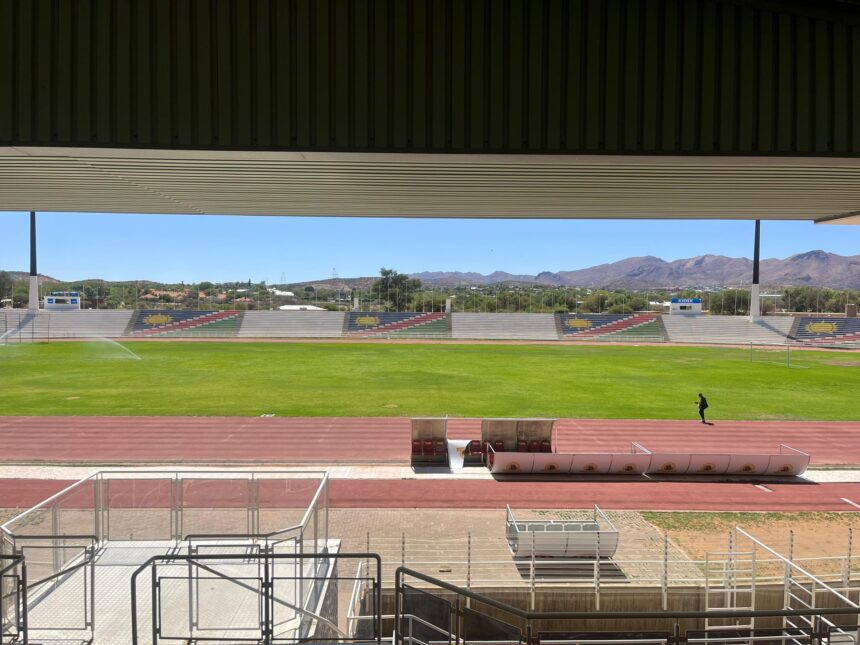The Namibian government is set to embark on a monumental N$2 billion project to overhaul and expand the Independence Stadium, with the upgrade expected to span three to four years.
This follows a comprehensive feasibility study conducted by Marley Tjitjo Architects, Richard Frankle & Partners, and Denchi Consulting Engineers for the ministry.
The cost of the work on the stadium are according to figures provided by the architects.
Currently, the Independence Stadium in Windhoek is in a state of disrepair as it was built before Independence, and is thus failing to meet the required standards set by the Confederation of African Football (CAF).
The planned renovations will not only bring the stadium up to international specifications, but also transform it into a world-class multi-purpose venue.
Once completed, it will have a seating capacity of 31 278 from the current 25 000 spectators and will serve a variety of functions. Beyond hosting football matches, the stadium will be equipped to accommodate athletics events, major government functions, entertainment activities and community events, positioning it as the country’s premier sports facility.
The upgrade will make the stadium suitable for high-profile events such as national football team matches, Africa Cup of Nations’ qualifiers, and Fifa World Cup qualifiers. In addition to refurbishing the main stadium, the project will involve purchasing land around the existing site, demolishing old structures, and constructing new facilities such as a modern training ground, medical areas, new and improved VIP and VVIP seating, media zones and state-of-the-art lighting systems.
The overhaul will also address critical infrastructural needs such as stormwater drainage, security controls, turnstiles, and proper sanitation facilities. This extensive upgrade will require a substantial workforce, with personnel needed for the construction, as well as the installation of critical utilities and services.
The executive director of the Ministry of Sports, Youth and National Service, Erastus Haitengula, explained that the plans include a new three-tiered structure with ground, first, and second floors and to ensure the best possible design and cost-efficiency, the architects conducted a comparative study of similar stadiums worldwide and looked at the cost involved.
Looking at neighbours
Among the stadiums analysed were the Moses Mabhida Stadium in Durban, South Africa, which cost N$8.1 billion to build, and the FNB Soccer Stadium in Johannesburg, which had a price tag of N$7.9 billion.
The Nelson Mandela Bay Stadium in South Africa cost N$4.8 billion. These three South African stadiums completed between 2007 and 2009, have seating capacities of 55 500, 94 736 and 46 000 respectively.
Other comparable projects include the National Heroes Stadium in Lusaka, Zambia, which was built for N$1.7 billion and has a seating capacity of 60 000 and the Amahoro National Stadium in Kigali, Rwanda, which cost N$2.9 billion with a seating capacity of 45 000.
Additionally, the Mandjafa Staium in N’Djomena, Chad is being built for N$2.8 billion with a seating capacity of 33 000, whereas the Estadio 11 De Noviembre Stadium in Talatana, Angola cost N$4. 08 billion. The Samia Suluhu Hassan Stadium in Arusha, Tanzania, built for N$2.1 billion, with seating capacity of 30 000, provided valuable insights into stadium construction at a similar scale to what is envisioned for Independence Stadium.
The Independence Stadium upgrade is slated to begin in the second quarter of the 2025/2026 financial year.
Haitengula confirmed that the government has already allocated funds for the project to kick-start once approved, and that the upcoming financial year’s budget will reflect the need to complete this transformative development.
He also noted that the executive board must review the feasibility study and engage all relevant stakeholders to finalise the next steps, with an anticipated approval process set to conclude within two weeks.
-lmupetami@nepc.com.na


